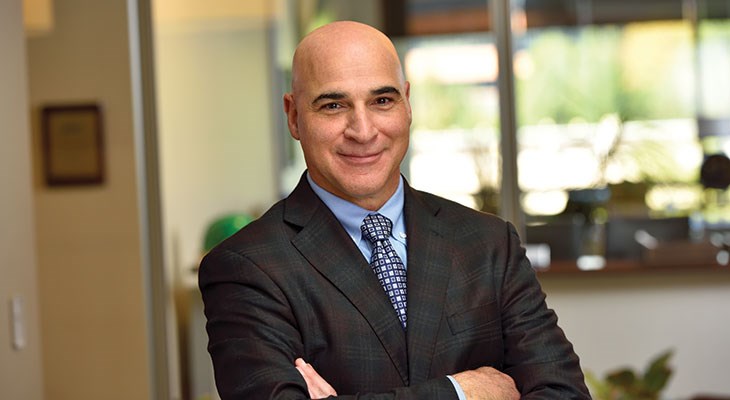Until a decade ago, MSA Safety hadn’t been very successful with its acquisitions. But that changed in 2010 when the safety equipment manufacturer took a risk and purchased General Monitors. It was MSA’s largest expansion since it was founded in 1914.
“We were just coming out of the recession, not quite totally out of it, and I give my predecessor a lot of credit,” says President and CEO Nish Vartanian. “It was high risk because the price of that acquisition was about $280 million. It was $72 million in revenue. And at the time, our EBIDTA was less than $100 million. Our leverage went up to three and a half times, which is pretty risky for a company our size with our profile.”
The difference was how the Pittsburgh company approached the integration. Vartanian was tapped to drive the effort to integrate the fixed gas and flame detection groups, which were similar in size for both companies. He moved to California and reported directly to the former CEO, William Lambert.
“That was the first time we had someone go do it and live with it and drive that integration” he says.
Choosing the right deal quarterback
Since then, MSA has done several other acquisitions following a similar integration approach — executing a focused plan.
In 2015, MSA bought Latchways, which nearly doubled MSA’s size in the fall protection space. In 2017, it moved into a new product category — turnout gear for firefighters — buying Globe for about $200 million. Most recently, last year, it made a small acquisition of Sierra Monitor, which also falls in the fixed gas and flame detection space, while providing opportunities for the internet of things.
Vartanian says all three were treated differently than prior purchases, like CGF Gallet. Gallet was seen as a European acquisition and was handled in Europe.
“Today, we look at it much more from a corporate standpoint,” he says. “We’ll take somebody out of corporate or find the best athlete, so to speak, to go do that integration for that specific need. We’re very intentional about who we’ll put in place for an integration. The General Monitors one was very much a focus around sales and distribution on a global basis. That’s why they put me there. That was my background.”
The Globe deal was quarterbacked by an executive with a tremendous background in fire service channels of distribution, while Latchways, an English company, was handled by someone with great international experience and knowledge. The strength of the Sierra Monitor deal is about technology, so the person spearheading that is technologically savvy.
“We’re lining the skillset up carefully,” Vartanian says. “We are always thinking about who could do the integration work and making sure we have the right person for the acquisition because that’s critical.”
Learn from the past and stay smart
Another key to successful integration is ensuring iconic brands stay present in the marketplace.
In the safety industry, longevity matters. If Pacific Gas and Electric, for example, has been buying certain safety equipment for 45 years, it will continue to do so because the workers trust it.
So when MSA integrates companies, it puts them on its systems and platforms, such as its SAP program, but keeps the brand in some way, shape or form.
MSA also makes sure it is honing its best practices and processes after each integration, despite the fact that no deal is the same. The company can measure its success by the fact that all three deals — General Monitors, Latchways and Globe — have experienced topline growth and have more employees associated with them than before MSA bought them.
Recently, Vartanian hired someone whose entire job is to look at deal opportunities, creating a pipeline and understanding what’s coming to market. He also uses his 35 years of contacts to keep his finger on the pulse on the industry himself.
MSA has the capacity to make more acquisitions because of a strong balance sheet. Its debt is fairly low – 1.3 times EBITDA — and can be flexed up to 3.5 times, which means close to $1 billion could be deployed.
However, Vatinian says they’ll be careful with that capital. MSA knows its organic growth is the most profitable by far, which is why it spends about 4 percent of its revenue on R&D.
“We try to be selective and not be like that kid in the candy store with a pocket full of money that wants to buy everything or just be a serial acquirer,” he says. “How can we be smart about what we’re adding to this business to strengthen our business and do it around our mission of protecting lives?”




